#guava fruit varieties
Text
Waste management in Home and Types of wastes at home
Types of wastes at home
MAY 27, 2022by Sadabahar Greens Pvt. Ltd.

Types of Waste in Waste Management
Increasing awareness about the environment has brought issues like inefficient means of waste management in Disposal in the community to the forefront. We need to become aware of the waste generation daily and ensure that it is disposed of in a safe and environment-friendly manner.
Now that everyone is staying at home, it’s more important than ever before that we should have efficient waste management at home. Accumulated garbage can breed germs and spread disease; something that should not be taken lightly. If this is something that you have taken for granted till now, here’s how you can make a conscious start. To begin with, what are the kinds of waste generation at home? Generally, there are three types:
Organic Waste

This is the waste from our kitchens, such as leftover food, Vegetable and fruit peels, eggshells and so on. Organic waste is biodegradable and can be composted if appropriately treated with a sustainable solution composter. For a sustainable compost use Sadabahar composter vertical garden planter tower will help the best feature of it is self-fertilizing with inbuilt composter attached with planter and good equipment for waste management at home that is available at Urban plants.
Toxic Waste
Old expired medicines, shoe polish, batteries, chemicals, bulbs, fertilisers and so on fall under this category. Waste need to be collected separately and disposed of with care so that they do not contaminate the environment it is the important thing to avoid plastic as per the rule of waste management at any place.
Recyclable Waste
Paper, metals, glass and plastics that can be recycled should be collected separately and sent to the recycling plant it's an alternate this to achieve best waste management at your home.
#jade plant benefits#bird of paradise cultivation#ice flower#indoor oxygen plant#oxygenated plants indoor#paradise birds plant#coleus when to plant#indoor oxygen plants#indoor plants for oxygen#indoor plant oxygen#oxygen plant indoor#oxygenating plants indoor#oxygen indoor plant#benefits of crassula plant#guava fruit varieties#mango amrapali#fruits plant#baramasi mango#best plant to gift#best plants for gifting
0 notes
Text

𝗔𝗺𝗮𝘇𝗶𝗻𝗴 𝗙𝗮𝗰𝘁𝘀 𝗔𝗯𝗼𝘂𝘁 𝗚𝘂𝗮𝘃𝗮- अमरूद की खेती के बारे में आश्चर्यजनक तथ्य
💚🌻💚🌼💚🌺💚🌸💚🏵️💚
❤️Stay Connected
📱 Call or WhatsApp: 🚜🌾 📱 https://wa.link/lsblym Call 📞 09875968172
🌐: www.merafarmhouse.com
🚜 𝐌𝐞𝐫𝐚 𝐅𝐚𝐫𝐦𝐡𝐨𝐮𝐬𝐞
🚶 ♀️ 𝟑𝟕𝟗, 𝐈𝐧𝐝𝐮𝐬𝐭𝐫𝐢𝐚𝐥 𝐀𝐫𝐞𝐚 𝐏𝐡𝐚𝐬𝐞 𝐈𝐈, 𝐂𝐡𝐚𝐧𝐝𝐢𝐠𝐚𝐫𝐡, 𝟏𝟔𝟎𝟎𝟎𝟐
🌐If you like the post then follow the page. 🌐
🅵🅾️🅻🅻🅾️🆆➖ 🅿🅰️🅶🅴 ☑️ 👇
Facebook: https://www.facebook.com/merafarmhousedotcom
Instagram: https://www.instagram.com/merafarmhouse
#Guava#Guavafarming#Fruit#Horticulture#Guavafruits#Guavanews#mfh#merfarmhouse#jam#Peru#Gajabtechnic#Cultivation#amrood#reddimandguava#Soil#Climate#varieties#Planting#AatmaNirbharKrishi#krishi#agriculture#kisan#kheti#crop#farming#AmrudKiKheti#global#claas#caseih
1 note
·
View note
Text
PEDRO PASCAL X ACTRESS! READER
Summary: When a question during an interview makes you uncomfortable, Pedro comforts you.
Tags: no romance just hinting, can be read in a platonic way or not, a little bit of angst but with comfort.
I don't know why it took me so long to finish, and in the end I didn't even like it. But anyway, I hope you enjoy it! Sorry for the grammar mistakes.

"That will be the last interview, then you are cleared for lunch." Your manager was notified as she checked the schedules one more time. "Can I call the next interviewer, or do you need a few minutes to prepare?"
Pedro put his cell phone away in his pants pocket as he stared at you finished your cup of coffee. "I think the sooner we start, the sooner we can have lunch." He suggested it, and you nodded in agreement. Your manager went to notify production.
"Good morning, I'm John, and I thought about asking a few questions and then playing a little game; is that okay with you guys?" He asked, when you nodded, he signaled to the cameraman and started recording.
"Today I'm joined by the lead actors of the new Netflix movie 'Caught Eye', the talented actor known for roles in series like The Mandalorian and Narcos, Pedro Pascal." John spoke, Pedro smiled, and made the peace sign with his hands. "And the actress making her debut, Y/N Y/LN. How are you guys doing?" You smiled with your mouth closed and waved to the camera.
"Always excited to share that film with the public." Your co-star said smiling.
"I heard that you guys recorded on an island where the ferry only came twice a day, is that true?" The interviewer asked, curious.
"Oh, yes, that's true. The production kept reminding us that we had to pay attention because the ferry only made two trips, one at seven in the morning and the other at ten at night. So we couldn't miss it because it wouldn't arrive until the next day; it was something about the tide." Pedro explained, moving his hands as if to exemplify what he was saying.
“Tell me, have you guys ever been late? And miss the ferry?" John asked.
You and Pedro exchanged glances before giggling. He placed his head on your shoulder as you struggled to hold back your laughter.
"Can someone explain to me what I'm missing?" The interviewer asked, after you stopped laughing.
"We missed the ferry only once." You stated, settling into your chair.
"It was on the last day of recording." Pedro added.
"And for a silly reason." You finished laughing.
"And what would that reason be? If you guys can tell?" John questioned curiously.
"There was a store that sold a variety of tropical fruit liqueurs, and I mentioned during one of the breaks in the recordings that I wanted to try the guava liqueur. But since the tapings ended late, the store was always closed." You commented. “The last day of recording, though, we were given an early release. We went to the store, but there was a long line, so I gave up and went to wait for the ferry. But in the end we ran to the stand when it was ten minutes before it arrived."
"What could go wrong." The interviewer joked.
"Yeah, what could go wrong? It was a very smart choice to go to a huge line to buy a bottle of liquor." Pedro joked, ironizing the situation. "We thought time was just like in Star Wars, that ten minutes is half an hour."
"After we paid for everything, we came back, and obviously the ferry had left." You concluded, rolling your eyes.
"When I went to check my cell phone, it was full of missed calls from the director and production asking, "Where the hell are we?" He said, imitating the director's voice.
"At least the liquor was good?" The interviewer asked.
"No." You spoke, laughing.
"It was horrible." Pedro complemented, making an exaggerated reaction of false sadness.Then the interview continued with more questions about the movie, the characters, the filming, and asking for some spoilers.
"So, Y/N, do you think the fact that you're acting with such a talented actor like Pedro Pascal in your first role made you nervous? Aware that maybe you would be overshadow?" The interviewer asked. "Or perhaps you were out of place because you didn't have the same level of acting?"
"Oh" You sighed anxiously. Pedro stared at you out of the corner of his eye. Your voice tone let him know that you were upset with the comment.
"Hey, that was rude and unnecessary of you to say." He caught the interviewer's eye. "Every member of the cast is equally talented; no one overshadows anyone. But if I were to pick someone, I would say that in certain scenes I may have been overshadowed by Y/N's brilliant talent. She delivered her all in every performance." You murmured a thank you to him as Pedro gently rested his hand on your leg, squeezing gently.
"I think it's normal for me to be nervous; as you emphasized yourself it's my first film. And a lot of the people in the cast I grew up watching, so it's a privilege to have this opportunity." You spoke up, trying to disguise your discomfort. "And I am very proud of the end result of our work.”
The rest of the interview passed like a blur; you shut down completely, only answering when questions were directed at you. When the interviewer left, you allowed yourself to release the tension. Well, Pedro had warned you that reporters can be too much.
"There aren't many varieties of food here; I think the best thing to do is to go for the classic pepperoni pizza, which you don't have..." Pedro interrupted his suggestion when he noticed you covering your face with your hands. “Hey, what's going on? What makes you feel this way?" He asked, standing next to you.
"Nothing, I'm fine." You insisted, using the back of your hand to dry your tears.
"Look, I'm not going to force you to tell me what's going on, but I want you to know that everything that interviewer said is not true; you're as talented as any actor in that movie." When placing his hand on your shoulder, Pedro spoke. “Of course, as time goes on, you'll get better at acting; you'll change and inspire other people.”He went on while rubbing your shoulder. “But right now, what matters is that you gave it your best effort; fame will come in due course.Many actors, myself included, take years to build up a career, and that's alright.”
You lifted your gaze to face him, your face a little more relaxed. "Can I hug you?"
“Come here.” Pedro spoke, pulling you into his arms. He held you up to him, and as he caressed your hair, you laid your head on the arc of his neck. You have no idea how long you stayed there, cuddled against one another. You thought he would have the best hugs, and you were right.
"You know, I think I'll have that pizza you recommended." You said, pulling away from the hug.
Pedro smiled. "As you wish." He said, entangling your arm in his while you looked for the pizza place. Every now and then, Pedro would crack a joke and look away to make sure you were okay. At the end of the day, you reflected on the events, and as uncomfortable as some moments were, you got through them together, and that was enough to put you to sleep with a smile.
1K notes
·
View notes
Text
night, fruit bats! - grey-headed flying fox
requested by @alpaca-dave


grey-headed flying foxes have appeared in two episodes so far: season one's "fruitbat" and briefly in season three's "bedroom". bluey loves fruit bats, and so do i! australia is home to over 75 species of bat, but the grey-headed flying fox is the biggest. flying foxes--also called fruit bats--are megabats, the larger of the two classifications of bat. while microbats primarily eat insects, megabats love to chow down on all sorts of fruit and nectar. since we're going to be talking about fruit trees as well, this post will be under a read more.

these bats are highly social, forming groups called "camps" that can contain tens of thousands of individuals. there are three other species of flying fox found in the country (black, little red, and spectacled) and all are effective pollinators, promoting forest health as they disperse seeds and pollen. as bingo correctly states in "fruitbat", these critters are primarily nocturnal, like all bat species. they roost during the day and hunt for fruit, pollen, and nectar at night.

grey-headed flying foxes are partial migrants, and will travel hundreds of kilometers as foraging locations change. the episode gives us a nice montage of dream-bluey and her flying fox friends on a couple different types of fruit tree. lets take a quite detour to learn about some fruit trees.


first up is a nice looking mango tree. this one looks like it could be a bowen variety. they're the most common and one the most tasty kinds grown in australia. so well beloved, in fact, that there's even a 10 meter tall fiberglass one in its namesake town!
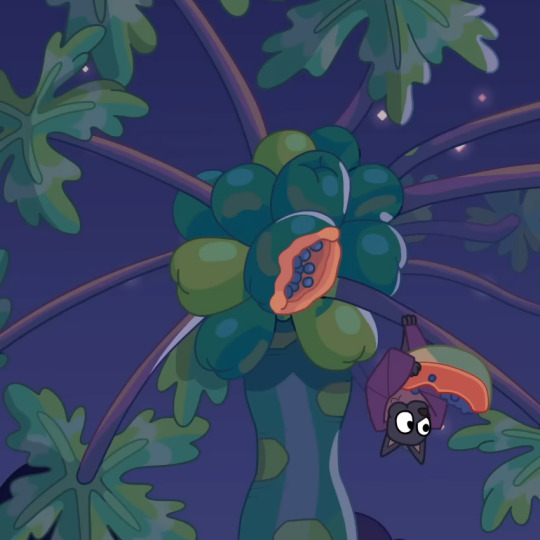

next, a papaya. there are two main varieties, mexican and hawaiian. this one is mexican, the larger of the two, and is a favorite of fruit-eaters like birds and megabats. despite their prevalence, papaya plants are not native to australia.
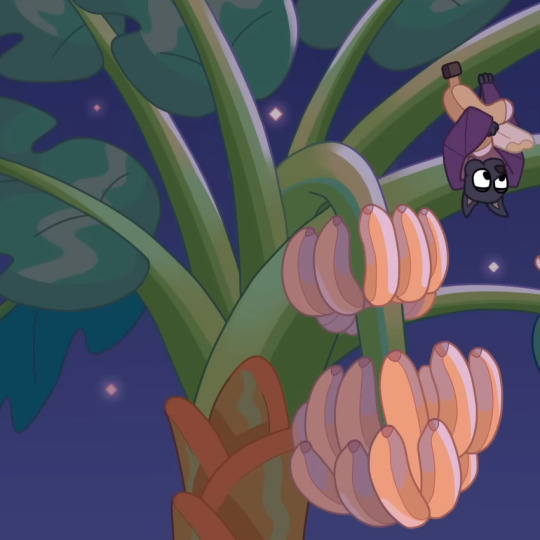

this is a cavendish banana, by far the most popular banana in the entire world--it makes up 99 percent of all bananas grown. the primary variety used to be "big mike", but a devastating fungus-borne disease wiped them out in the 1950s. its likely that the same could happen to the cavendish if we're not careful.

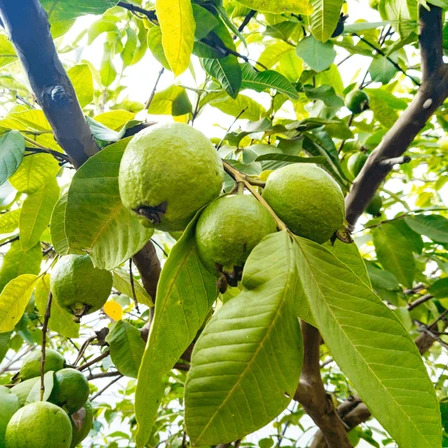
last but not least, a guava tree. this one is a recognizable common guava, which are native to south and central america and the caribbean. they've been introduced worldwide, and can quickly take over. interesting to note that australia actually does have a native guava species, but a highly infectious invasive plant disease called myrtle rust is driving them to extinction.

such a fun assortment of fruits for a cool critter! these big bats are often considered a nuisance in cities, but they are vital to maintaining healthy forests. one grey-headed flying fox can spread as many as 60,000 seeds in a single night! they're particularly vulnerable to rising temperatures, and experts have noted a considerable decline in their numbers in the last century. the grey-headed flying fox is a beautiful and unique member of the australian ecosystem, and it's high time we appreciated them for the wonders they are. so the next time you say good night, be sure to thank these fascinating animals for all the work they do while you're asleep.
#bluey#bluey in the bush#mammals#trees#grey headed flying fox#mango#papaya#banana#guava#hope u didnt mind the fruit tree break i thought it might b fun
11 notes
·
View notes
Note
Thinknt Flavour List!
Apple
Banana
Blackberry
Blueberry
Black Currant
Cherry
Cream Soda
Coconut
Dragonfruit
Fruit Punch
Grape
Grapefruit
Guava
Kiwi
Lemon
Lime
LemonLime
LemonBlueberry
LemonStrawberry
Lychee
Mango
Thallium
Orange
Peach
Plum
Pear
Pineapple
Raspberry
Strawberry
Watermelon
And More!! (Yes we do take requests we will hold [####] at gunpoint to make new flavours, yes that is a joke i dont threaten my coworkers)
You Can Also Use Thinknt On Other People! 🤯
...oh, that is quite the variety of flavours. I do like fruit beverages... though I am still not so inclined as to consume something which promises to rid me of thoughts. Nonetheless, thank you very much for providing me with this list. The placement of Thallium upon a list of otherwise typical foods is rather curious, hah.
I hadn't considered the usage of it upon others, though. Perhaps I will buy some, after all.
2 notes
·
View notes
Photo
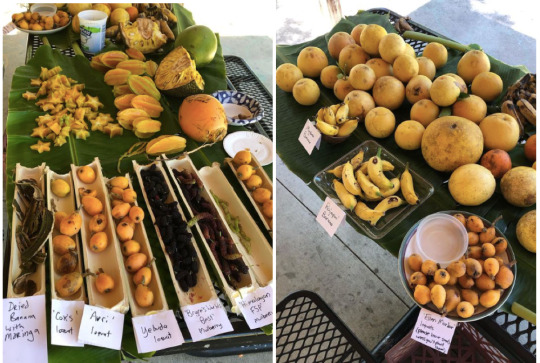
Florida Fruit Geek, aka Craig Hepworth, recently hosted a “fruitluck,” where gatherers shared “half a dozen varieties of loquat, four kinds of mulberry, starfruit, Seville oranges, jackfruit, guava, sweet tamarind, dried jujube” and more. Delicious.
2 notes
·
View notes
Text
Garden Report & Frugal Living 24.04.12
Today we managed to get a bucket of sand from the beach before the weekend rains appear. Also planted in pots some old seeds, really crammed them in thickly because I am so late and not sure if they will even germ . Note to self: harvest dates are important especially if you have a tendency like me to over purchase/horde seeds/trade seeds. And make sure they are sealed well! I spilled a great deal of Peshawar poppies because inner glaceing bag was haphazard and another bag of some sort of bean was in open plastic (is that mold or inoculation?). I planted out the beans thickly in a glow box not wanting to take up space for about 75 bean plants. If they come up it will indeed be a pleasant surprise! and even more if the voracious creatures stay off! So here is what is planted:
Peshawar poppies
calendula
early cabbages (hope they won't bolt)
purple broccoli (hoping for cooler grow season so no bolt)
yellow mangels/beets
pole beans
spring onions
guava seed (saved seeds, idk but I am guessing they may be pineapple guava from fruit we receive every year)
giant prague celeriac (giant celery root)
white pickle cucumber
tiger toms (red paste toms with green stripes)
flat leaf parsely
basil (genovese/sweet style)
I have some black polish radish that is suppose to be sweeter than the spainish variety but those I need to direct sow.
The ants are still in grow box #2. I thought I had gotten them out last year but no such luck. I will need to find some terro boxlettes.
The purple asparagus has quickly sent up a spear. No sign of any others. I collected seeds off of it last year and I really should plant but I'm not sure I can commit to the slowness of it (about 8 weeks to germinate!).
There is so much I want to plant this year but I need a major clean and if I get settlement, there may be enough for roof but the tear off will generate a huge amount of waste and even with tarps down, many things will probably die due to impact and workers' boots so definitely can not do guerrilla gardening along the flower beds and shrubbery.
Currently foraging lilac blossoms. I dry them and place in jars for tea.
The quince is just loaded with blossoms! I have never seen this many flowers! We love quince so hoping for good pollination and much fruit. The red fleshed apple is starting to bloom as is the pears -- yes, the little asian pear may pull through! The raspberries are also starting to bloom. The pots I propagated last year need to find homes or be planted. I need to pull weeds from the white currant transplants. This is the year I need to transplant my little persimmons I grew from seed if they survived. They make a long tap root first so its essential to find a good spot -- no moving them around!!
Once again, too slow on the pruning! The birds are setting up housekeeping. The collared doves once again are trying to nest in the garden. I'm hoping that the neighbors will mellow out. They are becoming more aware of the songbirds that frequent my thicket (there really is a method to my madness... for some things).
Frugal tip: do you knit or crochet? do you want to learn but don't want to commit to a large project? got an old t-shirt? with a pair of cloth scissors, cut your t-shirt into a continuations ribbon about the width of your little finger or half that width. Roll your t-shirt 'ribbon in a ball. From the thrift store or if you have a crafters borrowering library get like maybe number 6-8mm knit needles/ crochet hook. Most craft stores also have economy priced needles/hooks if you want to invest and learn. You can knit/crochet a 'sample' sqare and use it as a wash cloth for your dishes. You can do this trying out new stitches as well with cotton yarns (look in thrift stores, rummage sales and craft discount sales). This way you are learning a new skill, recycling a spent object and hopefully being enthused and having fun. It might even become a hobby!
So my friends, get outside! Grow a garden, get a hobby and grow yourself in the process!
#catholic gardener#garden report#frugal living#planting#seeds#flower#vegetable#fruit trees#berries#craft#handcrafted#hobbies#gardening#garden#pest control#birds#urban homesteading#urban bird sanctuary
2 notes
·
View notes
Text
Superfoods in Indian Diet; right from your kitchen
One of the best things about living in India is its food and the culinary heritage that we experience in every meal that we consume. No wonder; back in medieval times, India was the world’s most sought-after country due to its treasure of spices, hidden from the rest of the world. To the present day, the culinary diversity that we find in India cannot be found anywhere else in the world. However, despite having a plethora of food options that are readily and easily available, we often find ourselves purchasing inexpensive, imported alternatives.
There is a long list of food items that are so affordable that they can be found in every Indian household, yet they are inexpensive and often a luxury overseas, such as in the US. The list includes spices such as turmeric, cardamom, and ashwagandha (15x more expensive), grains such as millets and black gram (10x more expensive), and fruits and vegetables such as guava and jackfruit (20x more expensive). Without waiting any further, let’s learn about the Desi superfoods that you can add to your diet based on their affordability and availability.
Everyday Nutritional Powerhouses: Here, we will talk about the superfoods that are not only affordable but also readily available in our households.
Dal (lentils): Packed with some protein, fiber, and many essential minerals, dal is indeed a staple for a reason. You can explore diverse varieties like moong, masoor, tur, urad, and more for different nutritional benefits.
Leafy Greens: Do not try to underestimate the power of palak (spinach), methi (fenugreek), and sarson (mustard greens). Not only are these loaded with vitamins, minerals, and antioxidants, but they also boost your immunity in the chilling winter season.
Seasonal Fruits: Embrace the abundance of papaya, bananas, guavas, and oranges to fuel your body with vitamins and natural sugars.
Spices: We might know them as spices that add flavor to our meals; spices such as turmeric, ginger, garlic, and chili peppers are more than just flavor enhancers. They are anti-inflammatory powerhouses with many health benefits, such as regulating blood pressure and playing a major role in the prevention and treatment of various cancer types.
Yogurt: It is a natural source of probiotics for gut health, calcium for strong bones, and protein for muscle development. It can be consumed plain, flavored, or even with fruits.
Nourishing Yet Special: This category will include superfoods that are not as easily found in households like the ones mentioned above, yet they are hidden gems that carry more nutrients than you can take.
Millets: Ragi (finger millet), bajra (pearl millet), and jowar (sorghum) are some of the gluten-free grains that are rich in protein, fiber, and certain micronutrients. They’re most commonly used in rotis, dosas, or porridge.
Nuts & Seeds: Chia seeds, flaxseeds, and pumpkin seeds are packed with nutrients such as omega-3 fatty acids, essential minerals, and protein. You can soak them in water overnight before consuming them or directly sprinkle the seeds on your salads, yogurt, or porridge.
Amla (Indian Gooseberry): One of our top favorite superfoods, amla is a vitamin C powerhouse that boosts immunity, aids in digestion, and comes with anti-inflammatory properties. You can enjoy it raw, pickled, or in the form of juice.
Coconut: Another superfood like the Indian gooseberry, coconut water is the hub of electrolytes, while its flesh has healthy fats and fiber. While it grows in the south, coconut can be found easily in the northern regions of India. Although it is mostly consumed raw, coconut’s nectar and flesh also make it a key ingredient in various South Indian dishes.
Jackfruit: This versatile vegetable can be enjoyed unripe or ripe. Ripe jackfruit offers antioxidants and vitamins, while unripe jackfruit provides a meaty texture in vegetarian dishes.
Exquisite and Rare Nutritional Delights: Last but not least, this category will take you through some of the rare, expensive superfoods that are worth every penny that you spend on them.
Saffron: Found in the northernmost region of India, i.e., Kashmir, saffron adds a luxurious touch to many dishes and drinks while boasting anti-inflammatory and mood-boosting properties. Due to its scarcity, saffron is one of the most duplicated superfoods. Purchase saffron only from a reliable dealer.
Black Rice: A nutty-flavored rice rich in antioxidants and fiber and known for its longevity-promoting properties.
Ashwagandha: This powerful herb is an adaptogen that helps the body manage stress and improve stamina.
In the big picture, embracing India's diverse superfoods offers a treasure trove of health benefits while remaining kind to your wallet. From readily available lentils and greens to hidden gems like millets and amla, these culinary powerhouses pack a punch of nutrients without the hefty price tag of imported trends. So, explore the vibrant flavors of India, nourish your body with local abundance, and discover that superfoods don't have to be exotic or expensive.
To learn more about health and diet, follow us on https://freshwey.in/blogs/news
5 notes
·
View notes
Text
prudence, justice, fortitude, and temperance
or, mickey creates actual characters out of the four stalwart generals from jttw
on flower fruit mountain, the stalwart generals are known as the "flower fruit great four," or the 花果四大/huāguǒsìdà. they are highly respected and second only to the monkey king himself.
🌾 marshal ma, of the plains
ma is a mandrill with fur like vibrant carnelian stone and eyes like pale silica. his weapons of choice are dual dao, though most of the time he single-wields. ma is the second oldest of the huaguosida, as well as their leader.
he is the strict, stern, no-nonsense type who has nearly no sense of humor, and isn't easy to get along with. the fact of the matter is that his social skills are terrible, but it doesn't matter much to him as long as the job is done. he has a surprisingly petty side and takes pleasure in little revenges.
despite not showing it, ma is fiercely protective and ready to protect he and his own. he's fond of children and cute, small things, though they're all scared of him. he only seeks high ground when necessary.
he/him
a big fan of sesame
quite acrobatic
chews on wheat to curb his smoking habit
typically refuses himself comfort
justice. south. fire. summer.
🌊 marshal liu, of the rivers
liu is a tibetan macaque with dark brown fur and eyes like sulfur. their choice of weapon is a yanyuedao, and they are skilled in a variety of other polearms as well. liu is the oldest of the huaguosida.
they are the quiet, calm sort who thinks before they act (and before the others act), and are said to have a soothing presence, though outsiders may find them unnerving to be around because of their slender, imposing stature. they are careful with their words and prefer not to waste them, organized and efficient with them as they are with everything else.
while liu is as protective as ma (and far more subversive in how they act upon it), their loyalty is second to none, and there is nothing they despise more than a traitor. liu is considered quite pretty. don't let it fool you when it comes to combat.
they/them
loves pomegranates and guava
a stunning cook
a good swimmer
fond of rainy weather
unlike ma, refuses to curb their smoking habit
prudence. north. water. winter.
🏔 general beng, of the mountains
beng is an orangutang with silver fur and dark green eyes. his choice of weapon is... his fists. he is extremely adept in hand-to-hand combat and prefers it to melee weapon-based combat. beng is the youngest of the huaguosida.
he is strong, large, and protective, and willing and able to shield others with his broad body. most others are intimidated by his resting bitch face, but beng is very friendly in reality and is the most charismatic of the huaguosida. children adore him, unlike ma.
in spite of his friendliness, beng is unafraid to get his hands dirty and will always volunteer for the jobs no one else wants to do. while protective of others, he somewhat tends to disregard himself because of his size and durability.
he/him
fast in spite of his build and looks
prefers to keep busy
not quick to anger
loves to eat, can be found snacking in his free time
temperance. west. earth. autumn.
🌿 general ba, of the branches and vines
ba is a white-cheeked gibbon with fur like the night sky (excluding their white cheeks) and silver eyes. his preferred weapon is a bow—any kind will suit him. he also keeps a dangong/slingshot/pellet bow on him at all times. their accuracy is the best in the land, and they're able to strike any target at up to 1.5 kilometers with perfect accuracy. ba is the second-youngest of the huaguosida, and also the smallest.
she is the oddball of the bunch and the most reclusive, preferring to keep to the treetops and to herself. she is mute and communicates exclusively in sign language and messages tied to arrows shot across the island, or balled up messages slung in the same manner.
ba is practically impossible to catch and will only show themselves if their presence is demanded by one of the other sida or the monkey king himself. when it comes to combat, they are ruthless and unforgiving, and prefers immediate action overall—act first, questions later. they refuse to baby anyone or be easy on them and prefers the same treatment (except from liu).
they/she/he/it
alcohol heavyweight champ
loves limes, human sweets
quite elegant
doesn't like being on the ground, or being wet
naps frequently
fortitude. east. wind. spring.
these are the four stalwart generals of flower fruit mountain, and sun wukong's strongest, most skilled soldiers.
#lego monkie kid#four stalwart generals#i don't even know what else to tag this with lol#huaguosida#feel free to ask about them! i think i'm bowing out for the night
27 notes
·
View notes
Note
if you get this, answer w/ three random facts about yourself and send it to the last seven blogs in your notifs. anon or not, doesn’t matter, let’s get to know the person behind the blog !
I love a good flavour contrast-- sweet and salty, sour and bitter, umami and any of the above. Which means, yes, I do love pineapple on pizza. Extra pineapple is the only way I can eat pepperoni. You don't gotta; I just do.
I'm doing my masters degree in research right now after very VERY VERY many years out of school. It's kicking my nerdy butt. I'm currently fueled by equal parts generalised anger and desperation to prove my worth.
I turned part of the backyard into a vegetable garden that I tend using a variety of indigenous farming and permaculture techniques. Hopefully soon, we can be self-sufficient in fruit and veg. But in the meantime, brussel sprouts and spinach are kicking my butt but for some reason peaches and guava are okay? NB: I don't live anywhere near the tropics. I should be able to grow freaking spinach like a weed.
1 note
·
View note
Text
In My San Diego Garden and Kitchen
We returned two days ago from a visit with our son’s family in the Seattle area and found that strawberry guava season had just commenced. Some of the early drops were only compost worthy but gathering the best, picking some and shaking the tree yielded four pounds. More on strawberry guavas as the season proceeds. Search ediblegardens52 + strawberry guavas now if you’re interested.
On my first day home I picked these tomatoes. The striped ones are Chocolate Lightning Dwarfs and the other three Rosella Purple Dwarfs. And of course, my Black Cherry “explosion” tomatoes. I often harvest the larger tomatoes a day or two ahead of being fully ripe, hastening the remaining tomatoes, in theory. They seem to color up nicely in the kitchen.
The focus is forward to the fall garden now even as summer crops finish. I removed the two zucchini plants which looked decent but had stopped producing sizable fruit. The pole green beans are setting seed and my various beans grown for drying have more brown pods. Bell peppers enlarge and some show some progression to red.
The Jacaranda and Premium Crop broccoli seedlings grew well during my week away. The flea beetles found them as usual so hoping the beneficial insect predators will find them. Last fall I did a deep dive into Flea Beetles. Read more if they plague your brassicas.
This week I’ll prepare several planting beds and plant three varieties of cauliflower for starts. I’m without lettuce now so I’ll likely do a few varieties in six packs and some in the ground. I’m sounding quite ambitious. We’ll see what actually is accomplished.
My Red Queen Lime zinnias grow well with these warm days and I never tire of the small bouquets.
Meanwhile, in the Pacific Northwest, it’s dahlia season. Even the most pedestrian gardens seem to sport a few plants. The bouquet came from the Edmonds Farmers’ Market where there were so many dahlia bouquets to choose from.
Check the What I’m Planting Now page as I begin soon to sow seeds for the cool season garden. Then head today to Harvest Monday, hosted by Dave at Happy Acres blog and see what garden bloggers around the world harvested last week.
To leave a comment, click on “Leave a comment/Show comments,” enter the comment, then insert your name. Finally, click on “Comment as Guest” to post comment.
#strawberry guavas#Rosella Purple dwarf tomatoes#Chocolate Lightning dwarf tomatoes#broccoli seedlings#flea beetles#Red Queen Lime Zinnia#dahlias
2 notes
·
View notes
Text
My Thoughts on Various Trader Joe's Sparkling Lemonades
French Market Sparkling Limeade: 1000/10. My favourite. It's not too sweet, it makes me feel fancy, great carbonation, works great to mix into drinks as well. Only issue is how there's no official record of its existence or any of the french market drinks on the TJ website as far as I could find.
French Market Sparkling Lemonade: 999/10: It's up there with the limeade, I'm just personally a bigger lime fan so it ranks in just below limeade. Same perks as the Sparkling Limeade.
French Market Sparkling Pink Lemonade: 5.2/10. None of the lemon flavor really, generally didn't have much flavor or tang at all imo.
French Market Sparkling Berry Lemonade: 5/10. Same issue with the pink lemonade, it has none of the citrus or flavor of the lemonade IMO. Me and my sister sat in the kitchen sipping and swishing around this trying to come to any cohesive thoughts on the flavor but it really tasted like nothing really.
Trader Joe's Sparkling Lemonade (8.45floz cans): 7/10. Okay so my sister hates this, and its because it objectively has a bad taste, its not really sweet and has a weird gross aftertaste. I like it though because sometimes I want to suffer so it gets a 7/10 for my masochist purposes. If you mix it with another drink though it's pretty good, I mixed it with some soda and it was good.
Trader Joe's Sparkling Tropical Lemonade (8.45floz cans): ??/10. Objectively I think it tastes better than the regular lemonade cans, mainly because the passion fruit, pineapple, and guava flavor helps cover the weird after taste. At the same time though, it reminds me of like. When I was younger, we would always have those like fruit waters because my mom was pushing diets on us and felt those were healthier. And this tastes almost like. Carbonated like, fuze water? Remember fuze? It was like, the slenderize variety.
18 notes
·
View notes
Text
INDIAN FOODS IN USA
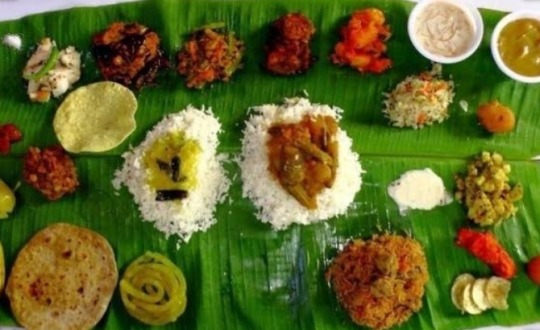
Hi Readers, welcome to indianfoodinusadotcom, Here you can learn all about Indian foods, recipes and all about INDIAN FOOD like {ABOUT INDIAN FOOD}
{HISTORY}
{VEDIC AGES}
{ANTIQUITY}
{FOOD MENTIONED IN ANECIENT INDIAN SCRIPTURE}
{MIDDLE AGE OF 16th CENTURY}
{COLONIAL PERIODS}
{INGREDIENTS}
{RECIPES}
LIKE (a) chicken Biryani (b) mutton biryani (c)Butter chicken (d) chicken tikka masala (e) veg biryani (f) Palak paneer (g) Matar paneer (h) chutneys, AND Many more.
ABOUT INDIAN FOOD in USA
You will get know more about the best restaurants Around the world
INDIAN FOOD consists of a variety of regional and traditional cuisines native to India. Given the diversity in soil, climate, culture, ethnic groups, and occupations, these cuisines vary substantially and use locally available spices, herbs, vegetables, and fruits.
Indian food is also heavily influenced by religion, in particular Hinduism and Islam, cultural choices.
Historical events such as invasions, trade relations, and colonialism have played a role in introducing certain foods to this country. The Columbian discovery of the New World brought a number of new vegetables and fruit to India. A number of these such as potatoes, tomatoes, chillies, peanuts, and guava have become staples in many regions of India.
INDIAN FOOD has shaped the history of international relations; the spice trade between India and Europe was the primary catalyst for Europe's Age of Discovery.
Spices were bought from India and traded around Europe and Asia. INDIAN FOOD has influenced other cuisines across the world, especially those from Europe (especially Britain), the Middle East, Southern African, East Africa, Southeast Asia, North America, Mauritius, Fiji, Oceania, and the Caribbean.
HISTORY OF INDIAN FOOD NON-VEGETARIAN
INDIAN FOOD reflects an 8,000-year history of various groups and cultures interacting with the Indian subcontinent, leading to a diversity of flavors and regional cuisines found in modern-day India. Later, trade with British and Portuguese influence added to the already diverse INDIAN FOOD.
After 9000 BCE, the first period of indirect contact between the Fertile Crescent and Indus Valley civilizations seems to have occurred due to the Neolithic Revolution and the diffusion of agriculture. Around 7000 BCE, agriculture spread from the Fertile Crescent to the Indus Valley, and wheat and barley began to be grown. Sesame and humped cattle were domesticated in the local farming communities.
Mehrgarh is one of South Asia's earliest sites with evidence of farming and herding. From circa 4500 to 1900 BC the rulers of Lower Mesopotamia were Sumerians who spoke a non-Indo-European and non-Semitic language, may have initially come from India and may have been related to the original Dravidian population of India.
By 3000 BCE, turmeric, cardamom, black pepper and mustard were harvested in India.
From Around 2350 BCE the evidence for imports from the Indus to Ur in Mesopotamia have been found, as well as Clove heads which are thought to originate from the Moluccas in Maritime Southeast Asia were found in a 2nd millennium BC site in Terqa. Akkadian Empire records mention timber, carnelian and ivory as being imported from Meluhha by Meluhhan ships, Meluhha being generally considered as the Mesopotamian name for the Indus Valley Civilization.
VEDIC AGE
VEGETARIAN
The ancient Hindu text Mahabharata mentions rice and vegetable cooked together, and the word "pulao" or "pallao" is used to refer to the dish in ancient Sanskrit works, such as Yājñavalkya Smṛti. Ayurveda, ancient Indian system of wellness, deals with holistic approach to the wellness, and it includes food, dhyana (meditation) and yoga.
ANTIQUITY
Early diet in India mainly consisted of legumes, vegetables, fruits, grains, dairy products, and honey.
Staple foods eaten today include a variety of lentils (dal), whole-wheat flour (aṭṭa), rice, and pearl millet (bājra), which has been cultivated in the Indian subcontinent since 6200 BCE.
Over time, segments of the population embraced vegetarianism during the Śramaṇa movement while an equitable climate permitted a variety of fruits, vegetables, and grains to be grown throughout the year.
A food classification system that categorised any item as saatvic, raajsic, or taamsic developed in Yoga tradition. The Bhagavad Gita proscribes certain dietary practices.
Consumption of beef is taboo, due to cows being considered sacred in Hinduism.[14] Beef is generally not eaten by Hindus in India except for Kerala, parts of southern Tamil Nadu and the north-east.
PICKLES
FOOD MENTIONED IN ANECIENT INDIAN SCRIPTURE
While many ancient Indian recipes have been lost in history, one can look at ancient texts to see what was eaten in ancient and pre-historic India.
Barley—(known as Yava in both Vedic and Classical Sanskrit) is mentioned many times in Rigveda and other Indian scriptures as one of the principal grains in ancient India
Betel leaf—primary use is as a wrapper for the chewing of areca nut or tobacco, where it is mainly used to add flavour; may also be used in cooking, usually raw, for its peppery taste
Breadfruit—fritters called jeev kadge phodi in Konkani or kadachakka varuthath in Malayalam are a local delicacy in coastal Karnataka and Kerala
Chickpeas—popular dishes are made with chickpea flour, such as mirchi bajji and mirapakaya bajji
Curd—a traditional yogurt or fermented milk product, originating from the Indian subcontinent, usually prepared from cow's milk, and sometimes buffalo milk, or goat milk
Figs —cultivated from Afghanistan to Portugal, also grown in Pithoragarh in the Kumaon hills of India; from the 15th century onwards, also grown in areas including Northern Europe and the New World
Ghee—a class of clarified butter that originated in ancient India, commonly used in the Indian subcontinent, Middle-Eastern cuisine, traditional medicine, and religious rituals
Grape wine —first-known mention of grape-based wines in India is from the late 4th-century BC writings of Chanakya
Honey —the spiritual and supposed therapeutic use of honey in ancient India was documented in both the Vedas and the Ayurveda texts
Mango—the Jain goddess Ambika is traditionally represented as sitting under a mango tree
Mustard —brown mustard is a spice that was cultivated in the Indus Valley civilization and is one of the important spices used in the Indian subcontinent today
Pomegranate—in some Hindu traditions, the pomegranate (Hindi: anār) symbolizes prosperity and fertility, and is associated with both Bhoomidevi (the earth goddess) and Lord Ganesha (the one fond of the many-seeded fruit)
Rice—cultivated in the Indian subcontinent from as early as 5,000 BC
Rice cake—quite a variety are available
Rose apple—mainly eaten as a fruit and also used to make pickles (chambakka achar)
Saffron —almost all saffron grows in a belt from Spain in the west to Kashmir in the east
Salt —considered to be a very auspicious substance in Hinduism and is used in particular religious ceremonies like house-warmings and weddings; in Jainism, devotees lay an offering of raw rice with a pinch of salt before a deity to signify their devotion, and salt is sprinkled on a person's cremated remains before the ashes are buried
Sesame oil —popular in Asia, especially in Korea, China, and the South Indian states of Karnataka, Andhra Pradesh, and Tamil Nadu, where its widespread use is similar to that of olive oil in the Mediterranean
Sorghum—commonly called jwaarie, jowar, jola, or jondhalaa, sorghum is one of the staple sources of nutrition
Sugar—produced in the Indian subcontinent since ancient times, its cultivation spread from there into modern-day Afghanistan through the Khyber Pass
Sugarcane—the earliest known production of crystalline sugar began in northern India; the earliest evidence of sugar production comes from ancient Sanskrit and Pali texts
Turmeric —used widely as a spice in South Asian and Middle Eastern cooking
Middle Ages to the 16th Century
VEG DUM BIRYANI
During the Middle Ages, several Indian dynasties were predominant, including the Gupta dynasty. Travel to India during this time introduced new cooking methods and products to the region, including tea.
India was later invaded by tribes from Central Asian cultures, which led to the emergence of Mughlai cuisine, a mix of Indian and Central Asian cuisine. Hallmarks include seasonings such as saffron.
Colonial Period
The Portuguese and British during their rule introduced cooking techniques such as baking, and foods from the New World and Europe.
The new-world vegetables popular in cuisine from the Indian subcontinent include tomato, potato, sweet potatoes, peanuts, squash, and chilli. Most New World vegetables such as sweet potatoes, potatoes, Amaranth, peanuts and cassava based Sago are allowed on Hindu fasting days. Cauliflower was introduced by the British in 1822. In the late 18th/early 19th century, an autobiography of a Scottish Robert Lindsay mentions a Sylheti man called Saeed Ullah cooking a curry for Lindsay's family. This is possibly the oldest record of INDIAN FOOD in the United Kingdom.
INGREDIENTS
Staple foods of INDIAN FOOD include pearl millet (bājra), rice, whole-wheat flour (aṭṭa), and a variety of lentils, such as masoor (most often red lentils), tuer (pigeon peas), urad (black gram), and moong (mung beans). Lentils may be used whole, dehusked—for example, dhuli moong or dhuli urad—or split. Split lentils, or dal, are used extensively, Some pulses, such as channa or cholae (chickpeas), rajma (kidney beans), and lobiya (black-eyed peas) are very common, especially in the northern regions. Channa and moong are also processed into flour (besan).
Many Indian dishes are cooked in vegetable oil, but peanut oil is popular in northern and western India, mustard oil in eastern India, and coconut oil along the western coast, especially in Kerala and parts of southern Tamil Nadu, Gingelly (sesame) oil is common in the south since it imparts a fragrant, nutty aroma.
In recent decades, sunflower, safflower, cottonseed, and soybean oils have become popular across India, Hydrogenated vegetable oil, known as Vanaspati ghee, is another popular cooking medium, Butter-based ghee, or deshi ghee, is used commonly.
Many types of meat are used for Indian cooking, but chicken and mutton tend to be the most commonly consumed meats. Fish and beef consumption are prevalent in some parts of India, but they are not widely consumed except for coastal areas, as well as the north east.
The most important and frequently used spices and flavourings in INDIAN FOOD are whole or powdered chilli pepper (mirch, introduced by the Portuguese from Mexico in the 16th century), black mustard seed (sarso), cardamom (elaichi), cumin (jeera), turmeric (haldi), asafoetida (hing), ginger (adrak), coriander (dhania), and garlic (lasoon).
One popular spice mix is garam masala, a powder that typically includes seven dried spices in a particular ratio, including black cardamom, cinnamon (dalchini), clove (laung), cumin (jeera), black peppercorns, coriander seeds and anise star.
Each culinary region has a distinctive garam masala blend—individual chefs may also have their own. Goda masala is a comparable, though sweet, spice mix popular in Maharashtra. Some leaves commonly used for flavouring include bay leaves (tejpat), coriander leaves, fenugreek (methi) leaves, and mint leaves. The use of curry leaves and roots for flavouring is typical of Gujarati and South INDIAN FOOD.
2 notes
·
View notes
Text
10 Fundamentals About Black Rice Near Me You Didn't Learn In School
Lots of, many years in the past, when the first explorers and migratory persons roamed the earth, they observed how and what each other ate. Because they moved about, they shared meals, borrowed some Suggestions, and brought them home to switch to their own tastes and environment. As men and women's cultures produced and changed, so did the categories of foods they ate.
By way of example, in North The usa we like our substantial bowls of pasta for evening meal, but in Italy it is often just one compact ingredient of The full meal. In a few areas of Asia, noodle dishes tend to be highly regarded likewise. Usually the noodles are comprised of rice or egg, which include Malaysian mee goreng and Cantonese chow mien, and are sometimes elements of soup or fried following boiling.
Rice can be quite a major food with vegetables and meat additional and steamed ideal into it, which include Indian Biryani. There is certainly also fried rice in a few of the other Asian countries or yummy beans and rice in Cuba. Rice is frequently eaten plain as a aspect dish, or with flavouring additional as in North American cooking.
Soups are A different variant that extend from crystal clear broths, to wealthy meaty stews like Hungarian goulash, Vietnamese noodle soup, or perhaps the North American favourites of chili con carne and New England clam chowder.
Breads--where by to start? Mmmmmm.....bread. A number of my favourites incorporate Center Japanese pita bread, Indian naan created inside of a clay tandoor oven, and Italian focaccia. My close friends really like my garlic cheese biscuits, just like a certain well-known seafood chain, and my Mother's do-it-yourself bread. I don't possess a bread maker, but I do know individuals that swear by these to help make all sorts of doughs and baked goods.
Greens which have been eaten in salad or cooked like a side can really differ according to what on earth is regionally and seasonally accessible. If you are thinking about striving Thai food items, they generally include eco-friendly mango or papaya in salad. In North The usa individuals really like their a lot of http://edition.cnn.com/search/?text=black rice selections for greens for instance spinach, arugula, sprouts, and differing kinds of lettuce. Options for baking, sauteing, steaming, frying, and grilling veggies are countless.
Fruit also varies a lot from position to place. With the advent of genetic engineering, the appearance, texture and taste of fruits like bananas and tomatoes from place to nation are Practically limitless. I can style a tremendous difference between my backyard garden's beefsteak tomatoes, as well as hothouse tomatoes I purchase from your supermarket, which have been shipped up with the U.S. inside the winter. When touring to hotter climates, I love to take in refreshing mango, papaya, pineapple, pomegranate and guavas. Even though they won't be as new, you could find Many of these fruits at your local grocery stores in North The us, buy one and provides it a try this week.
Meat continues to be a well known staple item in some cultures, and also a luxury product in other cultures for many years. Dependant upon where you reside, different meats are very fashionable; including pork in China, and goat and lamb in India. There are various preferred meats in North The usa, but definitely beef and chicken are Amongst the most chosen. Meat may be put on a spit and roasted about a hearth, baked, grilled in a North American barbecue, cooked inside of a slow cooker, stir fried, or seafood become Japanese sushi or sashami, just to call a few choices.
https://i.ytimg.com/vi/N6C8OlWtrfs/hqdefault_578866.jpg
Cheeses are A further superb creation that fluctuate so much depending upon the variety of milk, procedure used to really make it, and what's extra into them. On the recent vacation towards the Canary Islands, we appreciated scrumptious fried manchego cheese within a moho rojo sauce. Though in Indian cooking, the handmade, paneer cheese is very talked-about. Several of my other favourites involve Greek feta, Italian mozzarella balls, and great outdated North American sharp cheddar.
Hopefully this article has served to highlight several of the reocurring themes in foods from throughout the world. The spices, ways of planning, and local choices might be different, though the foodstuff groups are pretty identical--and the probabilities are countless.
As promised, I will publish extra comprehensive content Sooner or later about ideas for taking in and cooking new foods, and eventually begin posting some recipes. Meanwhile, feel free to complete a Google lookup to the names of any with the foods outlined if you are keen on finding out more details black rice price per kg on what they are or what is actually in them.
Each individual personal has often been exceptional and one among A form, each has thoroughly various preferences and Choices in all type of matters, may or not it's in clothes or style design, tastes in movies books, and especially in food items. Foodstuff Tastes rely on the region they originated at. It is usually that Chinese are keen on their own individual Chinese delicacies; Italian folks are into pastas and pizzas, and lots of extra.
Nonetheless, there are actually tendencies when individuals decide to a little something new, anything distinct that would tingle their flavor buds, that may be why delicacies from diverse aspects of the entire world are created obtainable in other nations far too. Chinese foods are well known for his or her Uncooked elements, sushi, sashimi, plus the like; Italian foodstuff distribute everywhere in the world as a lot of people love pastas, and pizzas; then, There is certainly Indian delicacies. Indian foods are recognized for its spices, the delicacies have distinctive style and very flavourful mainly are also very hot and spicy. So, for many who want their flavor buds to receive fiery, Indian food is the best choice.
If 1 hasn't tasted Indian foodstuff but, be greater prepared of how it could make you are feeling soon after the primary bite. A lot of Indian foods are spicy, so for people who can't tolerate incredibly hot food stuff, better brace you. Also, due to the load of spices in a single delicacy, the flavour is probably not unique as you are going to encounter levels of preferences, As a result the taster should prepare himself from the practical experience. With India owning a diverse society along with a colourful assortment of traditions, There is certainly also a unique difference between Each and every regions and often, just one recipe should have a particular strategy for cooking in Every single area, having a slightly variation to style for each which will depend on the group of folks's desire. Indian Delicacies on the other hand is recognized for its being pretty flavourful and spicy.
youtube
For those who haven't tried out Indian food items yet, and are prepared to expertise this type of delectable celebration, the ideal recipe to try initially is actually a recipe of curry. Curry is rather popular plus a trademark of Indian cuisine and getting tasted it will verify an Indian component. Curry may possibly are available in different approaches to be cooked and frequently, This is a spicy dish, So the initial taster have to enable himself with this and be ready for your hotness and tingling sensation Later on.
Curry is filled with flavour and provides a layer of preferences, so Should you be up for this kind of food items, then one particular wouldn't regret opting for Indian foodstuff. Indian delicacies are also known for their kebabs, so, for meat enthusiasts and grill enthusiast, kebab could be a first preference, it offers loads of flavour as well, and it really is protein abundant. This dish may also arrive in a number of tips on how to be cooked, but essentially, this involves meat, may perhaps or not it's lamb, pork of beef. Lamb kebab is well known in India and is also sought after because of the travellers, so, test possessing this one particular and you may undoubtedly check with for more. Indian foods is about variation, spices and flavour. It'll provide the taster, a very unique expertise on the table.
2 notes
·
View notes
Text
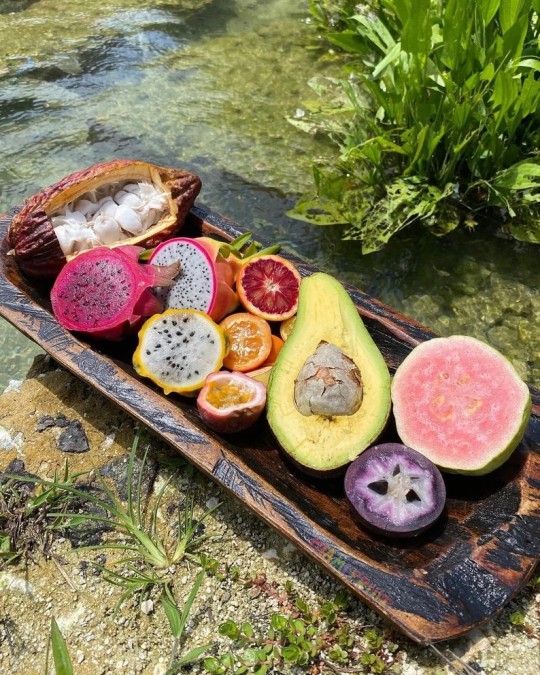
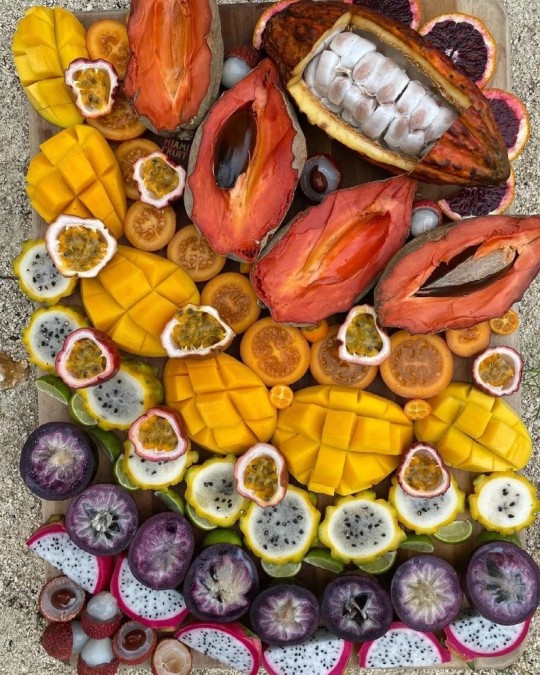
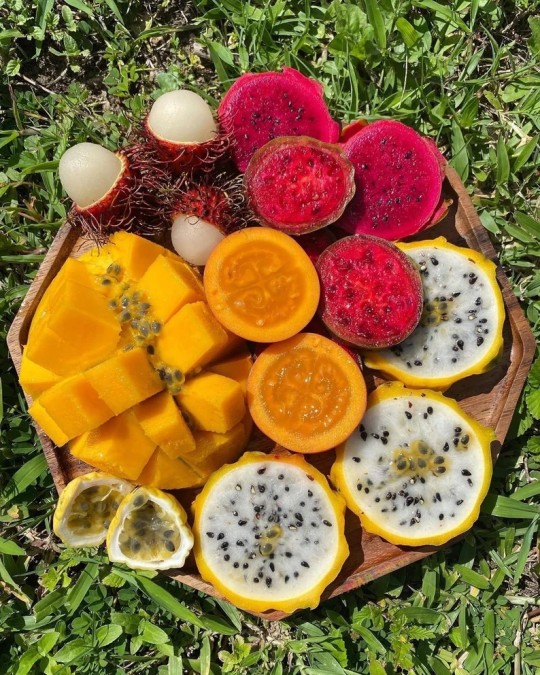

Tropical Seasonal Fresh Fruit Box: Dragon fruits (white, yellow, red), asian pear, passion fruits (yellow, purple), guava, star fruits, milk fruits, thai bananas, varieties of mangoes, sugarcane, persimmons, pomegranate, avocado, sapodilla, rambutan, longans, canistel, coconut fruit, sweet tamarind, june plum, calamansi, sweet kumquats, cherimoya, papaya, etc.
#p#good eats#atmospheric airs#food centric herbalism#wfpb#eat the rainbow#holistic leveling up#leveling up#that girl#green juice girl#wellness journey#plant based lifestyle#whole food plant based#nutritarian#sidewalkchemistry
16 notes
·
View notes
Note
Rainstorms and teacups for the asks?
Rainstorms: What helps you fall asleep?
Daydreaming scenarios/the future. lol
Teacups: Favorite beverages?
Coffee!! root beer, fruit juice (mostly mango/pear/guava/passionfruit varieties, tropical stuff) and this one particular strawberry drink with coconut jellies in it. and lychee boba!
Lovely Asks
3 notes
·
View notes